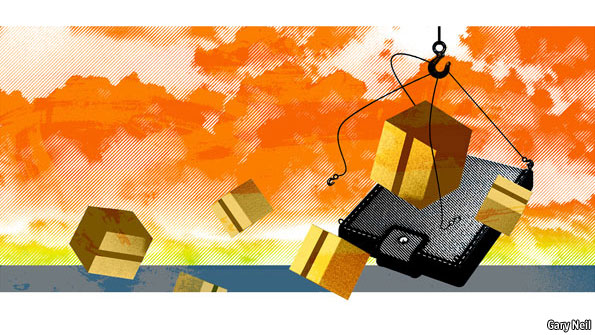Reason #1: Offshoring without getting the full picture
Over the years, working for and with numerous manufacturing companies, I’ve seen many supply chain practices that cost companies money. In a series of blog posts, I’ll outline these issues and discuss some ideas around how to avoid these practices.We all understand the appeal of moving manufacturing offshore; In many cases, offshore manufacturing is considerably cheaper, is apparently easier (just send the requirements and they build it!) But before you pull the trigger, make sure you understand these cost factors that don’t often get considered; Longer lead time - The product that at one time was manufactured in your plant and then shipped to your customer (often in the same country) is now being shipped by boat. Instead of a 1 week lead-time, you are looking at a month or more. This significantly changes the supply chain picture and must be considered in terms of additional safety stock requirements (which will drive up inventories) and your order promise policies. Communication issues - Dealing with people in other countries has its challenges; language barriers can make communicating detailed technical issues a challenge. Meetings are difficult to set up because one side or the other will need to take the call outside of normal business hours. And if you decide to meet face to face, you are looking at long travel times. Increased transportation costs – Has anyone noticed that the price of fuel is going up? Kind of hard not to notice actually. And I don’t think we are going to see fuel prices declining any time soon. These high fuel costs impact the shipping lines too and those costs will get passed on to you. Loss of control and oversight – Supply chain is complex. Anyone remember the complexity of managing a multi-part engineering change? Expediting multiple lines on a customer order? Implementing a manufacturing process change, Resolving a significant quality issue? Tough to get everything working together, right? Now imagine trying to do these things when you have no control over the manufacturing process. The bigger issue is that in the public’s eye, there is no difference between the company manufacturing the product and the brand that owns it. So, if the company manufacturing your goods has an accident or mistreats their employees, your brand is going to get dragged through the dirt. Intellectual Property loss – Very often, your design, your manufacturing processes are a closely guarded secret, and rightfully so. This knowledge is what sets you apart from the competition. When you offshore your manufacturing you are, by necessity, letting your secrets out to the world. And because you are dealing with a foreign country you may not have recourse if the company you contracted to make your product goes ahead and copies your product. So, as I mentioned earlier, moving your manufacturing offshore could well improve your financial position. That being said, before you make the move make sure you investigate and consider these additional cost factors. Do you have other costs associated with offshoring? Have any interesting stories? Comment back and let us know.





Discussions
While there are savings in tooling for plastics most of the so called savings comes from the spec not the place of manufacture. I can get a prototype mould made in China for 5,000, that same part in a production mould made in China to N.A specs for Export becomes 12,000 landed, if you make it in our tool room here in Canada its 15,000. Sadly that 3,000 is more important to most buyers than protecting their companies I.P., their neighbors job and many just don't know the difference between a prototype tool and a production tool.
For plastic parts they always work out 20% cheaper shot in China and 20% more by the time they are landed here, which means its cheaper to make the parts here in Canada. When the savings is more its usually because of substitutions of material. Sourcing authentic material in China is impossible without allot of checks on the ground which eat into your so called savings.
We build allot of tools in China, for that 20% savings. The moulds are then brought home to Canada and we run them here.
In the last 6 months we have had 25 or more injection moulds coming back from China to Canada by customers who did not see the savings they thought would get in China.
These moulds are sometimes without slides, build to a price point not a quality level and generally not worth bringing back.
For most small companies China is worse than a dead end.
Thanks again for your comments Ken.
Leave a Reply